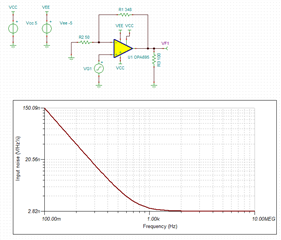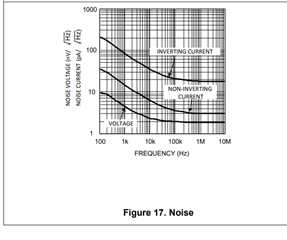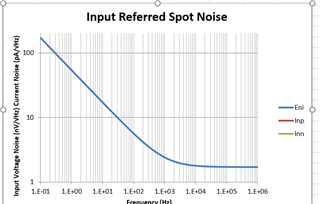Other Parts Discussed in Thread: LMH6702, THS3491
Hi Team,
Figure 13 in the datasheet shows the input voltage noise characteristics of OPA695 from 1kHz to 100MHz. Our customer would like to request for its input voltage noise characteristics from 0.1Hz to 1kHz. Is this information available?
Thanks in advance!
Kind Regards,
Jejomar





